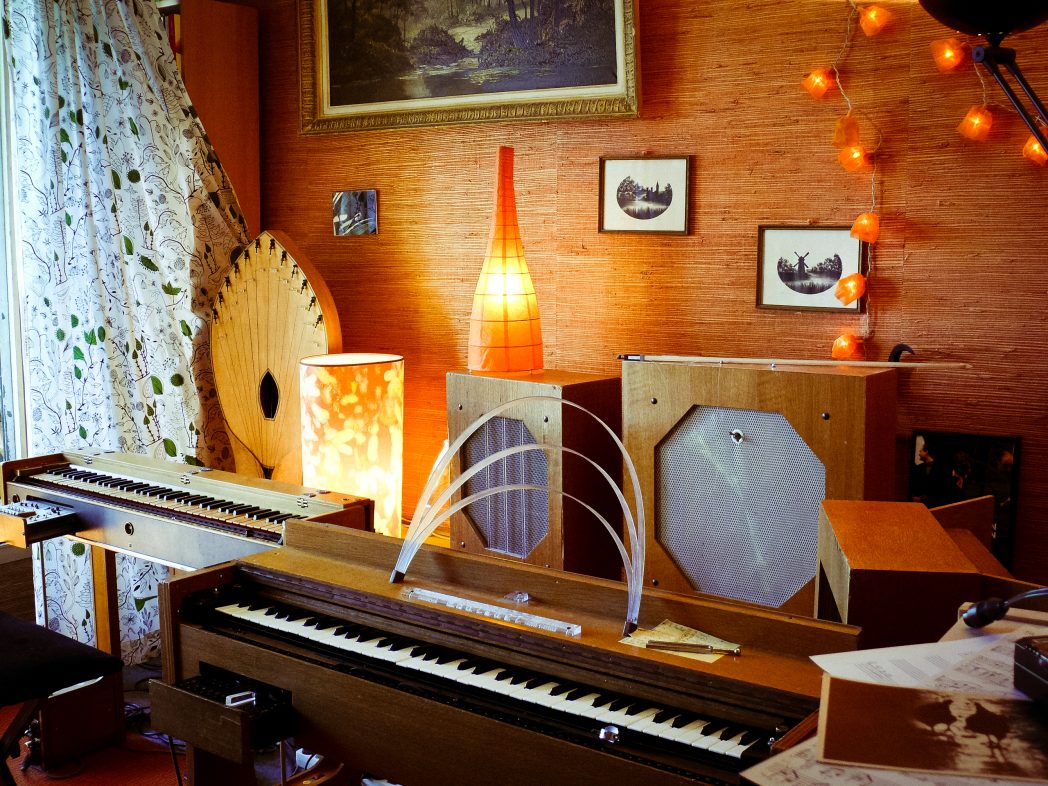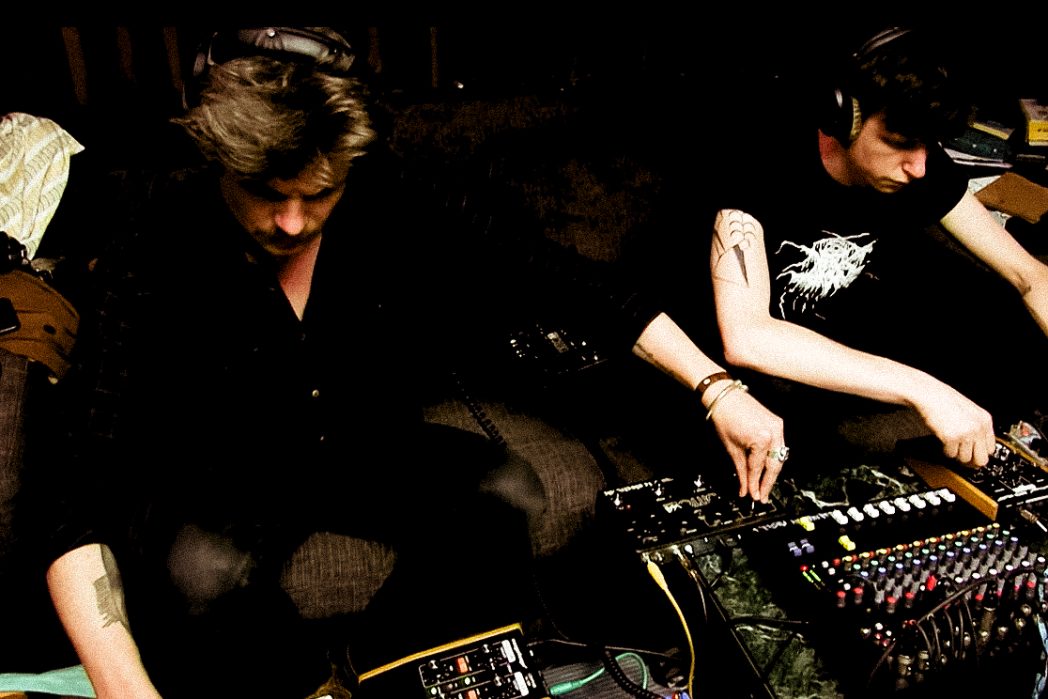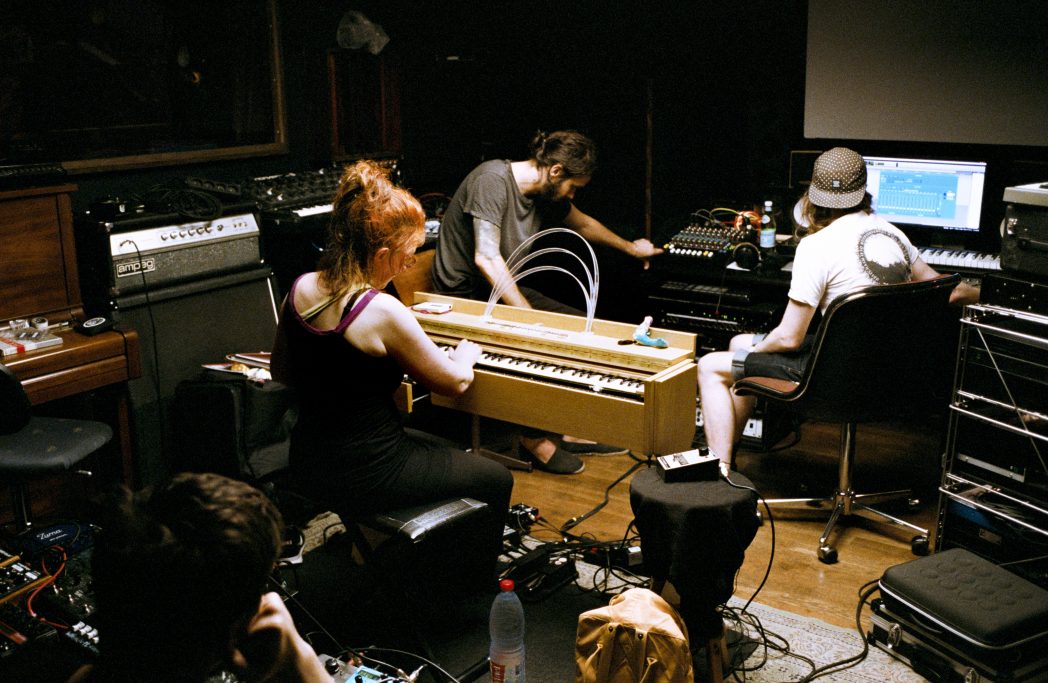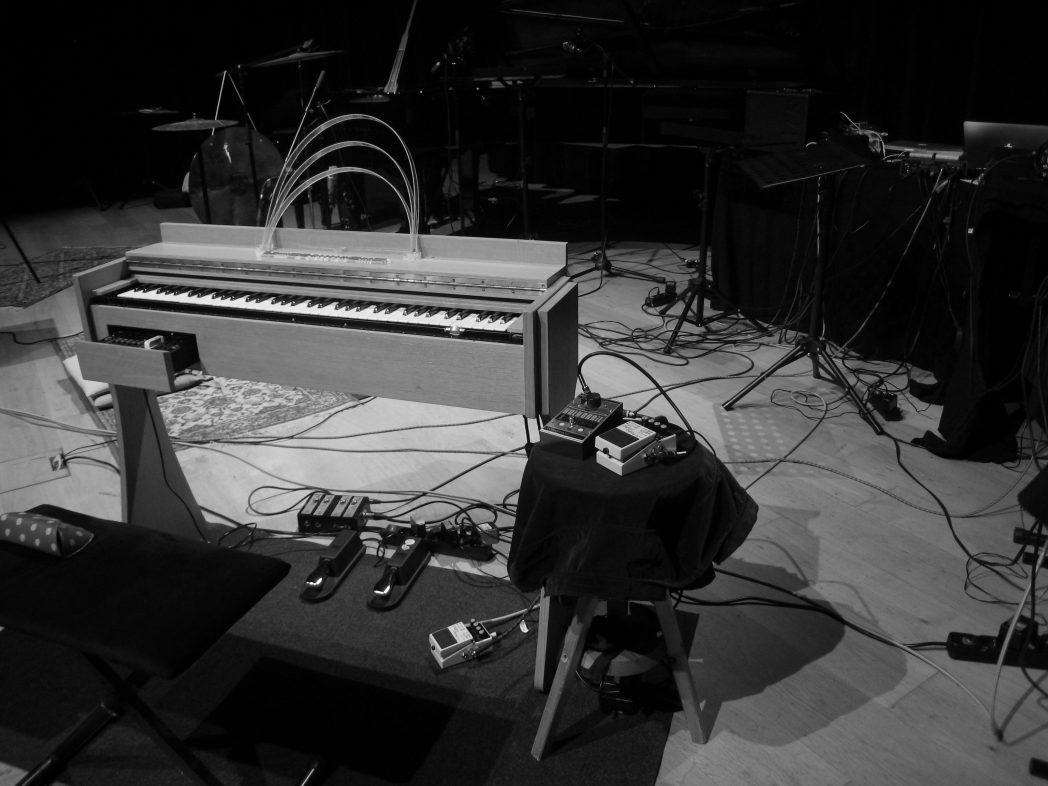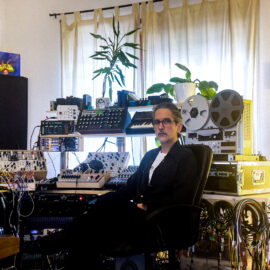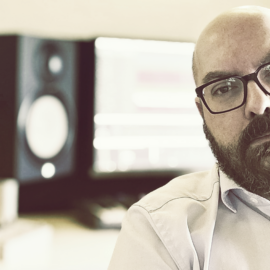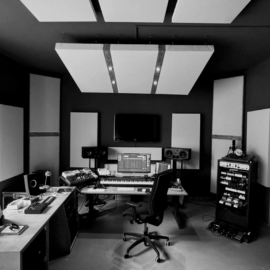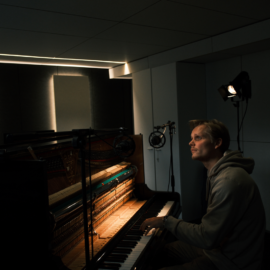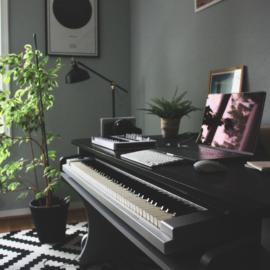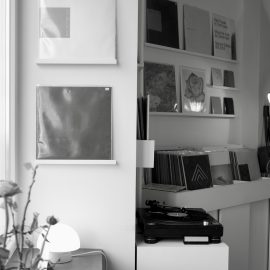Let’s start at the very beginning. Can you tell us how you got involved in composing, and what was your very first piece of gear?
I started writing music when I was a teenager, and like today, through improvisation, especially at night when my parents usually were sleeping. At this time, I didn’t have any recording machines, so I tried to write on paper as fast as possible the main ideas or themes of the pieces to structure them after. I played piano for a while, it was my first favorite instrument that I chose as a child. Later I understood that it was an excellent basis for composition. I only discovered the Ondes Martenot later…
And about the very first piece of gear… Maybe I should be ashamed to tell you the truth, but in fact, I’m not! I would say this kind of Fischer Price Playschool K7 Recorder, but it was not mine! I remember borrowing this K7 Recorder from Noë, the little brother of Elie whom I was giving piano lessons to when I was 18. Noë got angry and asked me to bring the machine back very quickly. It was quite fun and very useful for me.
How many different studio iterations have you gone through, and what does your final setup look like right now?
I am much more linked to a nomadic studio than a home studio. I have to say it’s more a question of access to space and instruments. Of course, I would like to group everything in one place. Moreover, it is sometimes quite fertile to have times of residencies, times of creation over a few days away from home. This often allows you to get to the point. To an essential…
By the way… I’d say I have 3 main places where I mainly work. I can practice at home and sometimes record with my lovely original Ondes 310 with the Martenot speakers. But they suffered a lot during Yann Tiersen’s Tour. I’m also lucky to share a studio near the harbor of Strasbourg with Mathieu Gabry, with whom we form Snowdrops and who has been accompanying me in many solo creations for several years. And sometimes, during the holidays I have the possibility to have some days, micro-residencies at the conservatory where I’m teaching the Ondes Martenot and giving Music & Cinema workshops. These moments allow me to record on a magnificent grand piano – an important starting point for some of my pieces – and on certain rare and precious instruments that allow me to carry out the orchestrations and arrangements that I have in mind. I’m aware of being very lucky and grateful for this…
But for my two last albums, there were totally recorded outside of these places. Chimères (pour Ondes Martenot), released in May by NAHAL Recordings, was recorded on three or four days in Paris, at the studio Mer/Noir. And the forthcoming Snowdrops album was recorded at the Wurth Museum auditorium, in two days. This one is called Volutes and will be released in a few weeks by London-based label Injazero.
Tell us about your favorite piece of hardware.
Most certainly, the speakers of the Ondes Martenot. As an ondist, I will not surprise you if I use our instrument’s specific vocabulary. So… As the Ondes Martenot is one of the earliest electronic musical instruments, there are traditionally four speakers used with the Ondes Martenot. Most of them are designed to amplify and modify the sound produced by the electronics inside the ondes. We traditionally name it “Diffuseurs”, D1, D2, D3, D4. You have the D1, which is a dry loudspeaker. The D2 is the resonance, spring reverb. The D3 is the “metallique” or “gong”, in fact, a suspended gong with a motor attached, producing metallic resonances. And the D4 is the palm. For this one, you have tuned strings that are also excited by a motor. It is really a magnificent piece of lutherie.
My favorite pieces of hardware are especially the “Palme”, the “Métallique” or “Gong” and also the wonderful mix between both of them – very organic sounds that invade your body. And maybe this amazing sound coming from the original “Résonance” with a low sound, a precise note which vibrates with the instrument and which will cause a sound explosion. A series of such incredible sensory experiences of sound. I am happy to have fantastic ones, but they are fragile and sadly a little bit damaged. But they had a crazy life, touring all around the world with amazing musicians.
And what about the software that you use for production?
I would like to say, the best software is an Edirol to record, a small speaker to listen to the improvisation again, a sheet music book to fix it with a good pencil. Anyway, Mathieu Gabry records and works mainly on Logic. He’s slowly teaching me how to use the software, but the important thing is elsewhere.
Is there a particular piece of gear that you’re just dying to get your hands on and do you think one day you’ll have it?
Yes, of course, the analogic Jupiter 8 synthesizer, special mention, the King! I am in love with this keyboard. I think I never would have one because of the quotation of the instrument. But I’m lucky to have a very good friend in the Vosges who has one. He offered me very gently to come recording so I could play on it. I improvised during hours with it… like in the opening part of “Disaster”, the final piece of Only Silence Remains (Gizeh Records, 2016). And I’m pretty sure my next solo album will open with a maelstrom of Jupiter 8 sounds. Then I’m still curious about so many instruments and synthesizers I did not have the chance to put my fingers on. I would be very curious to know what could go out of it, of a meeting with an ARP 2500, an EMS Synthi 100, or an Oberheim TVS-1… I am curious about what music could emerge from these experiences, from these meetings.
Can you please share some aspects of sound design in your work?
It is more or less important depending on my achievements. I feel close to a painter who uses colors and nuances. For the Ondes Martenot for example, I really like using their low register which I call “industrial sounds”, very different from the most known lyric sounds. I also like to turn away the instruments and use them in a different way than the usual way. I also love to record “sons concrets”, concrete or organic sounds that I record with my little and light recorder always in my pocket. The most beautiful thing is to be aware and alive when you’re walking in the forest, hearing and recording the sounds of the wind, bells, birds, of the rain, of the storm… Nature and also city life sounds. With Snowdrops, when producing the Manta Ray soundtrack, we went in that kind of design, in the field recordings, in a certain kind of melodic abstraction. I would like to go further with all the sounds I collected, I recorded, not necessarily instrumental, and to build a musical story with. I have to say that everything is a bit of a mess in this part of my computer… Too many sounds to listen to and work on… But it’s great.
Then I would like to talk of a totally different part of the sound design work, linked to the Ondes Martenot; this is the way to help maintain the knowledge and production of an instrument that is really so specific and could disappear. Maurice Martenot died in 1980, but hopefully, there are still some new versions of the instrument currently in production; I’m especially thinking of Jean-Loup Dierstein’s ondes musicales from Paris who I usually work with (see the photo), Naoyuki Omo’s Ondomo from Tokyo and David Kean’s reproduction of the Ondéa, originally designed by Ambro Oliva. Each of its achievements has its qualities, and I try to maintain a privileged link with their manufacturers in the development of their instruments. I’m very interested in that and, as a teacher, I feel it is my duty to talk about it with my students and to be able to give them the information they need. These three instrument makers/re-inventors are terribly endearing, exciting, and passionate.
Any particular new techniques that you tried out for your new album?
Chimères (pour Ondes Martenot) is a very special album for me. The concept was to make an album only from the Ondes Martenot, the Ondes Dierstein – the ones from Jean-Loup Dierstein to be precise. Frédéric D. Oberland and Paul Régimbeau came to me with this idea shortly after they founded their label NAHAL Recordings. I decided not to use traditional speakers for this record, and to work only from the signals generated by the Ondes Dierstein themselves. On the other hand, I left a lot of latitudes to Frédéric and Paul for the production and the treatment of this signal, which they processed live with a host of effects pedals that I let them present to you here!
Frédéric D. Oberland: From the beginning of this project, we knew that we didn’t want to record this album in a “classical” way. Therefore, in order to produce the sound of these Chimères (pour Ondes Martenot), we decided with Paul to play live with the dry mono signal coming from the Ondes Martenot. And to treat it through effect pedals during the takes, as the history of the synths and electronic music teaches us. Sometimes Christine would be listening to these extra tracks during her takes, and sometimes not: it would give us a big latitude to freely experiment with it, and later on to incorporate these processed tracks or not into the final mix. In order to add stereo modulation, delay, reverb, shimmer, harmonizer, subtle distortion, looping, we used some of our personal favorite gear and also a few devices belonging to the Mer/Noir studio: various Moog, Eventide, Strymon, and Empress pedals, and boutique devices from Old Blood Noise, Walrus Audio, Fairfield Circuitry, etc.
Paul: Exactly. The Space et Pitch Factor from Eventide was very useful to add width and amplitude to the sound of the Ondes. Also, the resonant filter of the Midi-Murf by Moog allowed us to sequence some frequencies and harmonics from the complex signal of this one-century old instrument. Our inspiration in producing this album came from the dub music where the effects which are played live are a continuity of the instrument itself and sometimes a part of the composition — especially when Christine would react live to our tweaking.
Christine: I would like to say something else. For me, the relationship you can have with an instrument or an effect is very personal, like a fusion. It often orientates my playing and the composition in itself. It’s the case with the piano, but here it was also the case with a reverb and shimmer effect that actually gave the name to the album phonetically. And the piece “Darkstar” comes from my meeting with the name of one of Frédéric’s pedals… This piece is also the story of this meeting.
What does your live setup look like, and what do you bring with you when you travel for an extensive tour?
It depends on the show I’m giving; it can be very very different. I do a certain number of cine-concerts, of creations. I do piano solo recitals or Ondes Martenot concerts as well. So it can vary a lot… About the ondes set, I mostly do without the speakers on stage – except sometimes for classical music. I did it at the beginning with Yann Tiersen with the original speakers, but it quickly became nonsense in relation to the music we played with Yann, the logistics, the stress, especially the risks linked to breakage. So it was something that we quickly imagined. I had to adapt, and in fact, it was very interesting for me to create a new personal setup. I have been able to develop playing technics to reproduce a little bit the sound of metallic, palm… So my traditional live set is much more minimalistic, working with the Fender twin amp or Vox ac30, sometimes AER and some pedals. Depending on the shows, I use Ondéa, Dierstein, or Ondomo. Finally, each of these Ondes finds its place and its qualities.
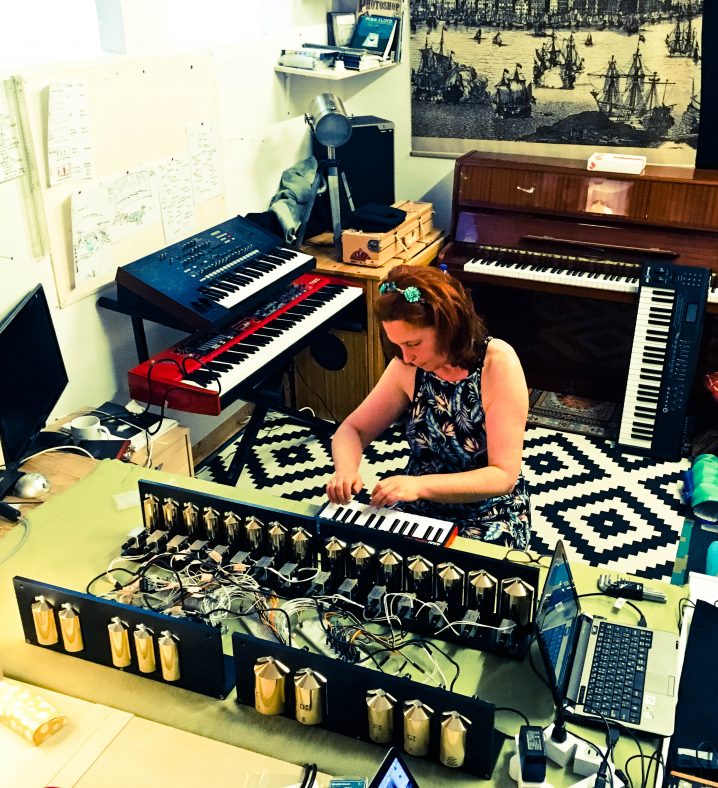
Some nice meetings also allowed me to create some original sets, unique concerts with particular instrumental devices. I am thinking in particular of my meeting with Tadahiro Negishi, designer of the Rin Bells. We were with Snowdrops at the Musik Messe in Frankfurt, we had a beautiful friendship with this designer of precise Japanese bells, and for whom he had developed a MIDI control prototype. We had that prototype in our studio for a few months and we were pleased to give a special gig with his creation at Silent Green in Berlin, in the presence of Tadahiro. It was a nice moment.
I’m also thinking of another recent meeting with the designer, Yves Usson. I was playing my live soundtrack Tabu in Grenoble and I met him there after the show. He created a pedal to emulate the Ondes Martenot speakers’ effects. It is still a prototype, still in development; I hope there will be a series next year.
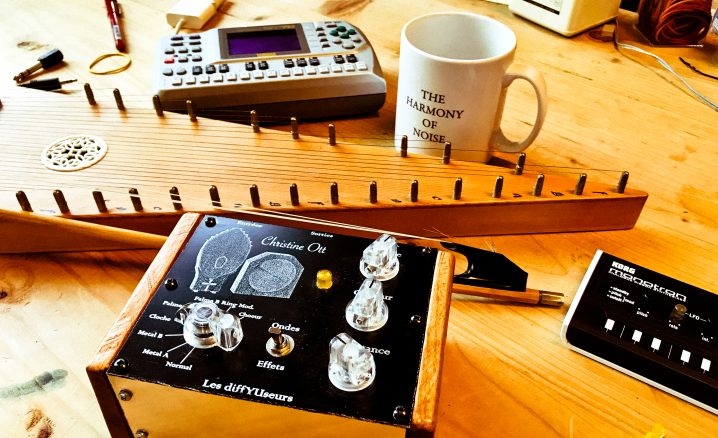
What is the most important environmental aspect of your current workspace and what would be a particular element that you would improve on?
I love space and outside view. If it’s nature, forest, trees, it’s great! A space where your mind can be floating. In fact, a place that the mind may not be locked away. If it’s your own workspace, it’s even better. I don’t have this place for the moment but your imagination can also create this special place, lights can help. Art. Paintings. Cocoon.
What can you tell us about your overall process of composition? How are the ideas born, where do they mature, and when do they finally see the light?
It depends on the albums. If it’s music for movies, the images are like the conductor and give you direct inspiration. As I mentioned before, everything is mostly based on improvisations. Some ideas slip away, like beautiful shooting stars. Others, by dint of playing them, begin to structure themselves. But there are no rules. Some pieces, even complex ones, find structure quickly. Others are revisited, re-corrected. Everything is never completely fixed. But, instinctively, I feel when the structure of a piece is defined and complete, it is held together. At least, the basic architecture of the musical piece. Some of them can exist in different forms, versions, formations, arrangements. And depending on the case I go through writing. I’m for example thinking of pieces like “Solitude Nomade”, “Paradise Lost” or “Comma” that have a lot of versions on paper or in my head. For example, I have six or seven versions of “Comma”. The first one came on the piano a long time ago. In Chimères, the opening piece is actually the third version. The ones in Snowdrops’ Volutes are the fourth and fifth variations; a more compact rewrite as a chamber orchestra and a freer development, both with viola player Anne-Irène Kempf. And as for “Comma”, “Ultraviolet” or “Todeslied”, I’m sure that there are other pieces that I composed that could have an even more orchestral, broader development… Maybe it’s my first classical inspiration that is coming out. Perhaps a reminiscence, memories of the magnificent orchestrations of Ravel and Debussy. I really love this idea to find the same piece in a different instrumental or orchestral version which sometimes gives you a very different feeling, view, or comprehension of the piece.
After the piece is complete, how do you audition the results? What are your reactions to hearing your music in a different context, setting, or a sound system?
When I was working on the mix of Only Silence Remains, the sound engineer gave me this very good advice to listen outside the home, on very different systems, in my car, on the worst material, recently with headphones… I also listen to my usual material at home which has become my reference.
The mix is always very important for me, it’s really important to work with someone who understands your music and your artistic direction. A mix far away for your musical intentions can completely destroy your music. In fact, in some cases, especially for Chimères or Volutes, the mixing step is part of the composition. For several years, we were doing a pre-mix with Mathieu, either for Snowdrops or my solo albums. For Chimères, the sound engineer Romain Poirier did a great job with us – Frédéric, Paul, and me. I love to work with Benoît Burger when he can find some time to do it. For the mastering, I usually only listen once or twice to check. I’m really grateful to have recently had James Plotkin and Sean McCann do the mastering of my albums.
Do you ever procrastinate? If so, what do you usually find yourself doing during those times?
In my kitchen, I have a poster where it’s written “Luxe du temps perdu…”
But I don’t have so much time for procrastinating. I am like a little ant, undoubtedly linked to my independence. Unfortunately, I have too little time to devote to music, but this time is a wonderful time for the cicada to sing!
What gets you inspired?
In my case, it’s clearly intuitive, the spontaneity of the moment, the relationship with other musicians, with instruments and with special places or space. It’s spontaneous, visual, digital, and skin-deep. Unconscious. It does not go through the mind or brain but rather through sensory feelings. Sometimes, it’s like black or white magic and it’s coming just from the position and memories of my hands. After that, there are undoubtedly unconscious, underlying inspirations. Walks in nature, in the forest, observation of the animal and botanical world. Other forms of art as well, especially cinema, pictures or paintings.
And finally, what are your thoughts on the state of “electronic music” today?
I have never been able to compartmentalize music into musical genres, it is difficult for me, like when people ask me what sort of music I’m composing. Sometimes musical frontiers, boundaries are blurry. I loved to play with Foudre! for the album Earth, we were like a quintet of electronic music, with the members of Saåad and Oiseaux-Tempête. Recently I discovered nice albums by Kaboom Karavan, Bow Quintet or Mia Zabelka, the album M. Electronics, acoustic, whatever. For an ondist, it’s probably normal to think that. At the crossroads of genres. Chimeras…
Photos by Frédéric D. Oberland, Mathieu Gabry, Christine Ott, Renaud de Foville, Benoit Lesieux & Mariko Mikami.

